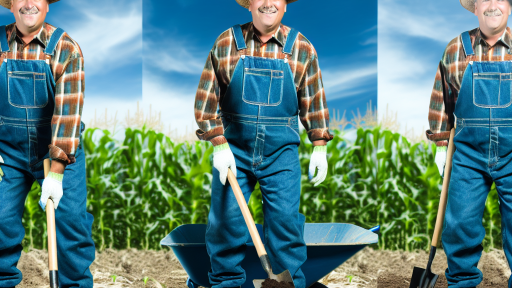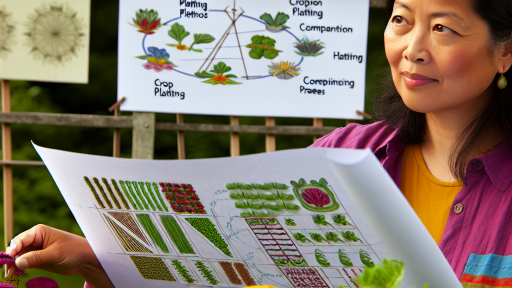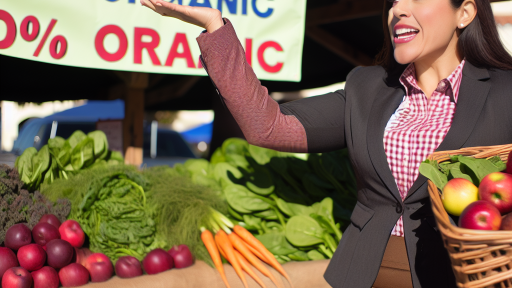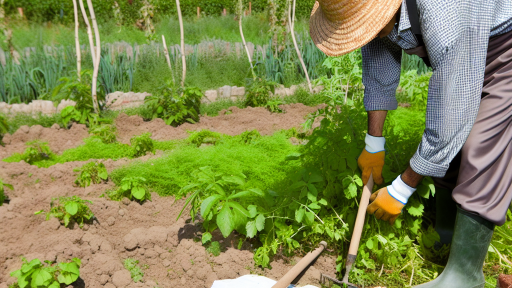Understanding the Basics of Organic Seed Saving
What Is Organic Seed Saving?
Organic seed saving refers to the practice of collecting seeds from organically grown plants.
This method supports biodiversity by preserving genetic traits in plants.
Additionally, it promotes self-sufficiency among farmers and gardeners.
Benefits of Organic Seed Saving
Saving seeds can significantly reduce gardening costs.
It allows farmers to adapt plants to their specific growing environments.
Furthermore, it encourages the use of heirloom varieties that may not be commercially available.
Understanding Seed Viability
Seed viability is crucial for successful planting.
It determines how many seeds will germinate each season.
Farmers should test seed viability regularly, especially for older seeds.
Choosing the Right Plants
Selecting healthy plants is essential for effective seed saving.
Choose plants that exhibit desirable traits, such as disease resistance.
Also, consider selecting plants that have adapted well to your specific climate.
Harvesting Seeds
Harvest seeds at the right time to ensure maximum viability.
For many plants, wait until the seeds are fully mature before collecting.
Use clean, sharp tools to prevent damage during the harvesting process.
Transform Your Agribusiness
Unlock your farm's potential with expert advice tailored to your needs. Get actionable steps that drive real results.
Get StartedStoring Seeds Properly
Storage conditions significantly affect seed longevity.
Seeds should be kept in a cool, dry place to maintain their viability.
Use airtight containers to protect seeds from moisture and pests.
Legal Considerations
Be aware of legal restrictions surrounding seed saving in your area.
Some regions may have regulations regarding patented seeds.
Understanding these laws prevents potential legal issues and promotes ethical practices.
The Importance of Genetic Diversity in Sustainable Farming
Enhancing Resilience
Genetic diversity strengthens plants against pests and diseases.
This resilience leads to healthier crops in varying environmental conditions.
Farmers benefit from diverse strains that adapt well to local conditions.
Improving Crop Yields
Varied genetics promote better crop yields over time.
By selecting plants with desirable traits, farmers maximize production.
Diverse genetics can also improve nutritional quality in food crops.
Preserving Ecosystem Functions
Genetic diversity supports ecosystem functions essential for farming.
These functions include pollination, soil health, and nutrient cycling.
Diverse plant populations provide habitats for beneficial organisms.
Ensuring Long-term Food Security
Maintaining genetic diversity is crucial for future food security.
This approach counters the risks posed by climate change and pests.
Farmers can rely on diverse crops to sustain production over generations.
Practices to Enhance Genetic Diversity
- Rotate crops to introduce various species in the soil.
- Save seeds from multiple varieties of the same crop.
- Create micro-habitats to support various plant species.
- Participate in seed exchanges with local growers.
Implementing these practices fosters a diverse and sustainable farming system.
Choosing the Right Crops for Seed Saving
Importance of Crop Selection
Choosing the right crops for seed saving is essential for sustainable farming.
It influences the health of your soil and the diversity of your farm.
A variety of crops can provide resilience against pests and diseases.
Moreover, certain crops are easier to save seeds from than others.
Best Crops for Seed Saving
Begin by selecting open-pollinated varieties.
Showcase Your Farming Business
Publish your professional farming services profile on our blog for a one-time fee of $200 and reach a dedicated audience of farmers and agribusiness owners.
Publish Your ProfileThese seeds produce crops true to type in subsequent generations.
Some excellent options include tomatoes, peppers, and beans.
Additionally, consider saving seeds from leafy greens and herbs like basil.
Climate and Environment Considerations
Your local climate plays a crucial role in crop selection.
Choose crops that thrive in your area’s specific weather conditions.
For instance, root crops are often drought-resistant.
On the other hand, leafy greens may require more water and cool temperatures.
Seasonal Factors to Consider
Pay attention to the seasons when planning your crops.
Some plants, like squash or cucumbers, produce abundant seeds quickly.
Timing the planting and harvesting properly can enhance seed quality.
Furthermore, avoid planting crops that cross-pollinate closely together.
Building Biodiversity
Selecting a mix of crops can enhance your farm’s biodiversity.
This diversity helps build resilience within your ecosystem.
Include native plants alongside your vegetables for better pollinator support.
Moreover, indigenous crops can be more adaptable to local conditions.
Learning from Experienced Farmers
Engage with local farmers who practice seed saving.
They can provide insights into successful crop selections.
Participate in seed saving groups or workshops to expand your knowledge.
Networking with others will also help you exchange seeds and ideas.
Uncover the Details: Designing Your Farm with Edible Landscaping
Techniques for Harvesting Seeds
Understanding the Importance of Timing
Timing plays a crucial role in seed harvesting.
It determines the quality and viability of the seeds.
Harvest too early, and the seeds may not be mature.
Conversely, waiting too long can cause seeds to shatter.
Observe your plants closely for visual cues.
Look for color change and drying of seed pods.
This will help you identify the optimal harvest time.
Methods for Effective Harvesting
Different plants require varying harvesting methods.
For dry seeds, use a gentle shaking motion.
This technique allows the seeds to fall without damage.
For wet seeds, handpick carefully to avoid bruising.
Another option is to use clippers or scissors.
Cut the seed heads and place them in a container.
Post-Harvest Handling
Post-harvest treatment is vital for seed preservation.
Start by cleaning the seeds to remove debris.
Use a screen or sieve for small seeds.
In contrast, larger seeds can be rinsed in water.
Once cleaned, dry the seeds thoroughly in a cool area.
Storing Seeds for Future Use
Store seeds in a cool, dark location to extend shelf life.
Airtight containers are ideal for preventing moisture buildup.
Showcase Your Farming Business
Publish your professional farming services profile on our blog for a one-time fee of $200 and reach a dedicated audience of farmers and agribusiness owners.
Publish Your ProfileLabel containers with the seed type and harvest date.
This organization will aid future planting decisions.
Final Tips for Successful Seed Saving
Practice patience during the harvesting process.
Ensure that you have the proper tools handy.
Maintain a clean workspace to avoid contamination.
Lastly, engage with fellow farmers for shared experiences.
These connections can provide valuable insights and techniques.
Find Out More: Choosing the Best Heirloom Plants for Your Land
Drying and Storing Seeds: Best Practices for Longevity
Importance of Proper Seed Drying
Proper seed drying is crucial for longevity.
Moisture content significantly impacts storage quality.
High moisture levels lead to mold and decay.
Thus, different seeds require unique drying techniques.
Methods for Drying Seeds
You can use a few effective methods for drying seeds.
Sowing can take place with air drying in a shaded area.
Lay seeds out in a single layer on a drying screen.
Another option involves using a dehydrator for more efficient drying.
This method works well during humid conditions.
Storing Seeds Safely
Storing seeds correctly ensures they remain viable.
Use airtight containers to protect seeds from moisture.
Glass jars or vacuum-sealed bags are excellent choices.
Label each container with the seed type and date.
Optimal Storage Conditions
Store seeds in a cool and dark place.
A temperature of around 32°F to 41°F is ideal.
Keep seeds away from direct sunlight and humidity.
Consider using a refrigerator for additional stability.
Checking Seed Viability
Always verify seed viability before planting.
You can perform a simple germination test.
Place a few seeds between damp paper towels.
Check for sprouting over a week or two.
Maintaining Seed Diversity
Saving seeds contributes to agricultural diversity.
Partner with local farmers to exchange seeds.
This fosters a rich variety of crops and techniques.
Engage within your community to share knowledge.
Uncover the Details: Seasonal Tips for Edible Landscaping
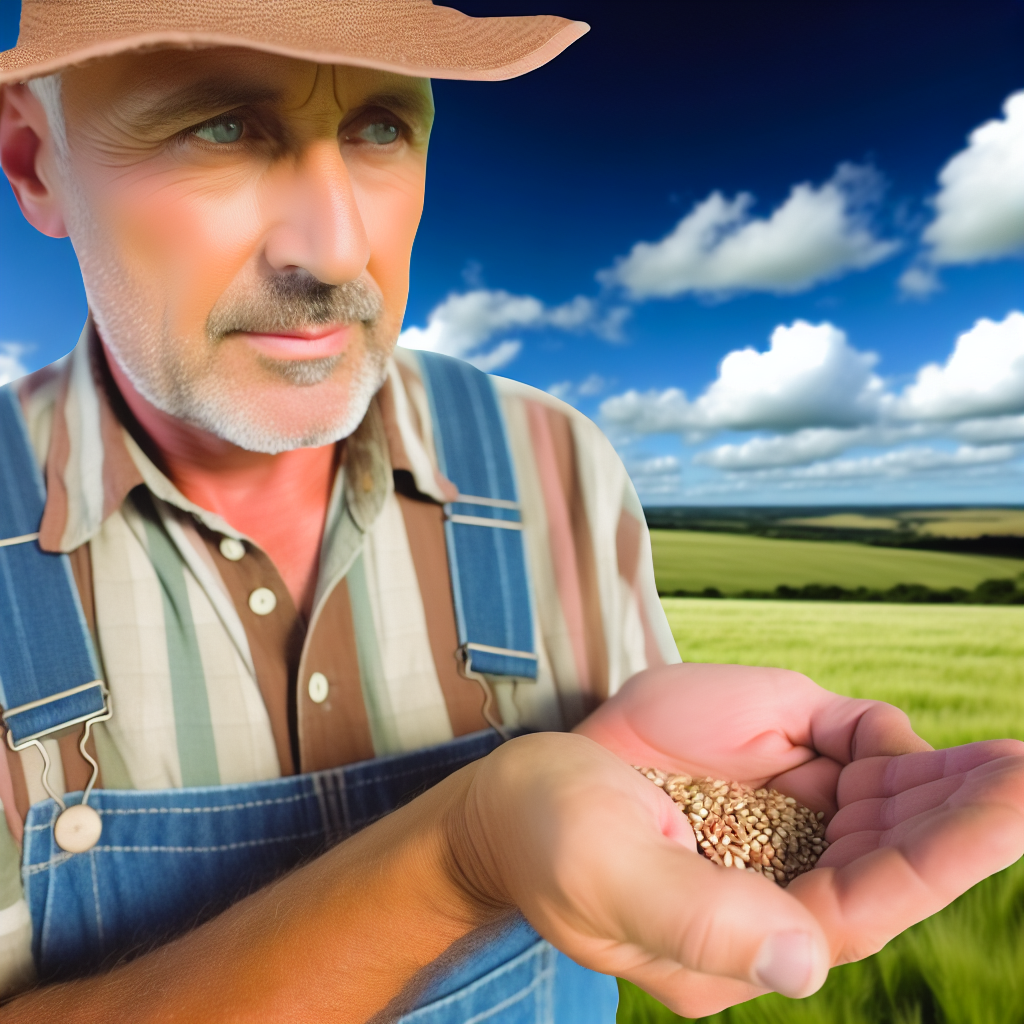
Preventing Cross-Pollination
Isolation Techniques for Seed Purity
Cross-pollination can affect seed purity significantly.
Implementing isolation techniques is essential for organic seed saving.
To begin with, you can use physical barriers to prevent unwanted pollination.
Physical Barriers
Fence off areas to reduce wind-dispersed pollen.
Utilize cloth or mesh as barriers in your garden.
Row covers can also provide effective isolation during flowering.
Showcase Your Farming Business
Publish your professional farming services profile on our blog for a one-time fee of $200 and reach a dedicated audience of farmers and agribusiness owners.
Publish Your ProfileAdditionally, plant dense hedges around your crops to act as windbreaks.
Spatial Isolation
Distance your crop varieties to minimize cross-pollination risk.
For instance, keep different varieties of similar plants at least 500 feet apart.
In smaller gardens, increase the distance as much as possible.
Consider timing as well; stagger planting times to avoid concurrent flowering.
Temporal Isolation
Adjusting planting schedules offers another isolation strategy.
By sowing different varieties at different times, you can prevent overlap in flowering.
This method can be especially effective for certain crops like corn.
Utilizing Block Planting
Block planting can further assist in maintaining seed purity.
Plant crops in blocks instead of rows to encourage better pollination within the same variety.
This method enhances control over pollination when managed correctly.
Monitoring and Record Keeping
Regularly monitor your crops for any signs of cross-pollination.
Keeping detailed records of planting dates and crop varieties aids in managing your garden.
Adjustments can be made based on observations for future planting seasons.
Collaboration with Neighbors
Engaging your neighbors can also help maintain seed purity.
Share information about planting schedules and proposed varieties.
Collaboration can minimize cross-pollination across adjacent gardens.
Uncover the Details: Optimizing Light for Hydroponic Plants
Legal Considerations
Regulations Surrounding Seed Saving
Seed saving is a valuable practice for sustainable farming.
However, it involves understanding various legal considerations.
Different countries have distinct laws governing seed saving.
These laws aim to protect intellectual property rights of breeders.
In some regions, seed saving from patented varieties is restricted.
Farmers must investigate local regulations carefully.
Understanding these laws prevents potential legal issues.
Intellectual Property Rights
Intellectual property laws significantly impact seed saving practices.
Patents protect the rights of plant breeders and developers.
This protection can limit farmers from saving seeds.
Farmers should know which seeds are patented before saving them.
Additionally, trademarks safeguard specific seed varieties.
Violating these rights can result in legal consequences.
Seed Exchange Regulations
Many regions have specific regulations surrounding seed exchanges.
These laws ensure the quality and safety of seeds being shared.
Organizations often facilitate seed exchanges legally.
Farmers can participate in these programs to access diverse seeds.
Understanding local requirements for seed exchanges is essential.
Organic Certification Standards
For organic farming, adhering to certification standards is vital.
These standards often include seed source regulations.
Farmers must use certified organic seeds for their crops.
Some exceptions allow for saving seeds from organic harvests.
Showcase Your Farming Business
Publish your professional farming services profile on our blog for a one-time fee of $200 and reach a dedicated audience of farmers and agribusiness owners.
Publish Your ProfileConsulting certification bodies ensures compliance with standards.
Resources for Farmers
Numerous resources are available to assist farmers.
Organizations like the Organic Seed Alliance provide guidance.
They offer information on seed laws and best practices.
Local agricultural extension offices can also help farmers.
Connecting with fellow farmers fosters a supportive community.
Agrarian cooperatives often provide resources about legal considerations.
Creating a Seed Library
Importance of Seed Libraries
Seed libraries are essential for sustainable farming.
They foster diversity in crops and resilience among farmers.
By sharing seeds, farmers strengthen community ties.
This resource reduces dependency on commercial seed suppliers.
Steps to Establish a Seed Library
Start by gathering community interest through meetings.
Engage local farmers, gardeners, and educators.
Next, identify a suitable location for the library.
A shared space can encourage collaboration and resource sharing.
After that, create a catalog of available seeds.
Document their origins and growing conditions clearly.
Building a Community Network
Host workshops to teach seed-saving techniques.
Invite experts to share their knowledge and skills.
Encourage participants to contribute seeds from their harvests.
Share success stories to inspire others in the community.
Maintaining the Seed Library
Implement a check-out system for seeds.
This allows farmers to borrow and return seeds easily.
Regularly assess the library’s inventory.
Replace old or low-demand seeds with new ones.
Foster ongoing communication among library members.
Benefits of Seed Libraries
Seed libraries enhance food sovereignty within communities.
They promote sustainable agricultural practices effectively.
Additionally, they provide access to heirloom and rare varieties.
Farmers can experiment with different crops year after year.

